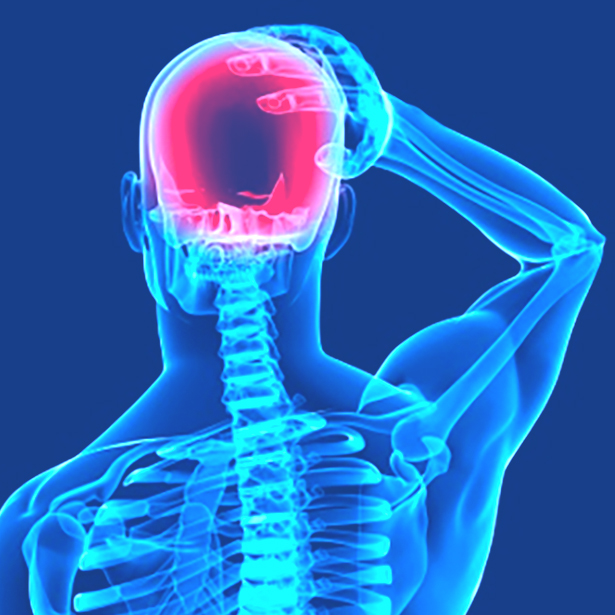
Our treatments provide pain relief for many varing conditions, including
Migraine Headaches
Migraine Headaches with Visual Distortion
Myogenic Headaches – Headaches caused by strained or irritated neck muscles
Vertebrogenic Headaches – Headaches caused by irritated or dysfunctional vertebrae
Migraine Headaches
Your head pounds, you can’t focus and the only thing you can do is crawl under the sheets until it all subsides. If this sounds familiar, chances are you get migraines.
Migraines are headaches that are more frequent and intense than everyday headaches. The word migraine, derived from the Greek hemikrania, which means “half of the head,” refers to a throbbing pain in one side of the head that’s often accompanied by a stiff and tender neck, extreme sensitivity to light and noise, difficulty concentrating, nausea and increased pain during routine physical activity. These symptoms typically last about four hours but can last as long as three days. And after the initial symptoms subside, people often feel physically exhausted and mentally foggy.
Migraines generally fall into two categories: classic and common. Most people who get migraines experience the common type, but about 20% experience classic migraines that involve common migraine symptoms accompanied by an aura, which is a visual disturbance that manifests as blurry vision, blind spots, zigzag lines or tunnel vision (a loss of peripheral vision). If you get migraines but don’t recognise these symptoms, you probably get common migraines.
The first experience of a common migraine typically occurs early in life. Twenty-five percent of people who get migraines have their first one before age 10, more than 55% have it before age 20 and more than 90% have it before age 40.
Gender and genetics seem to play a role in who experiences the condition. Women are three times more likely to have migraines, and about 90% of people who get them have a family history of the condition, according to the American Council for Headache Education.
If people have a predisposition to migraines, certain triggers can cause them. These include emotional stress, physical exertion, changes in the weather, environmental pollutants, certain medications, foods such as dairy products, red wine and chocolate and changes in sleep patterns.
What causes Migraine Headaches?
Researchers don’t know why these things trigger migraines, nor what physical processes cause the condition. Studies are currently focusing on the role of blood flow in the brain and head, hormonal changes in the central nervous system and electrical imbalances in cells.
Researchers do know, however, that when something triggers a migraine the ensuing symptoms can be debilitating, reducing people’s quality of life and affecting their relationships and job productivity.
What are the treatments for Migraine Headaches?
But there is help. Studies show that proper care can effectively reduce the frequency and intensity of migraines.
When you first visit your healthcare practitioner with the condition, he or she will take a detailed history and may perform a physical and neurological examination to determine what factors are contributing to your condition. Following this, adequate care can begin.
The Joint Treatment Centre can provide treatment plans, consisting of chiropractic adjustment and deep tissue massage, which can help reduce tension in the body and help with pain relief.
If you think you could benefit from any of our treatments or would like further information or assistance with migraine headaches, please do not hesitate to contact us to book an assessment.
